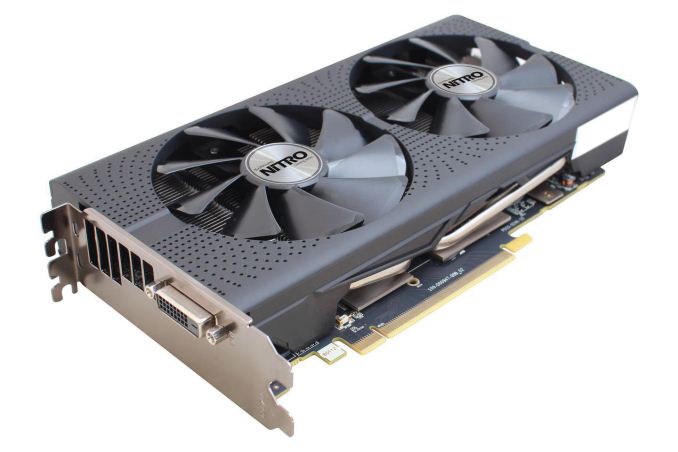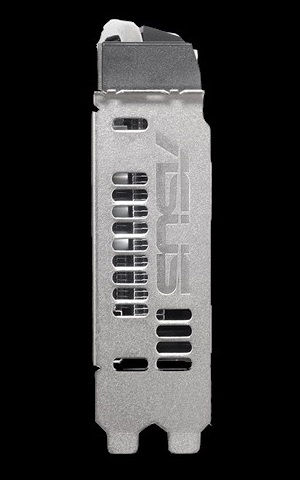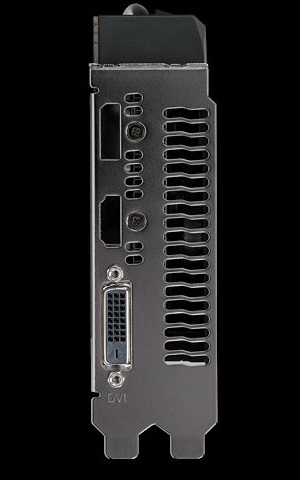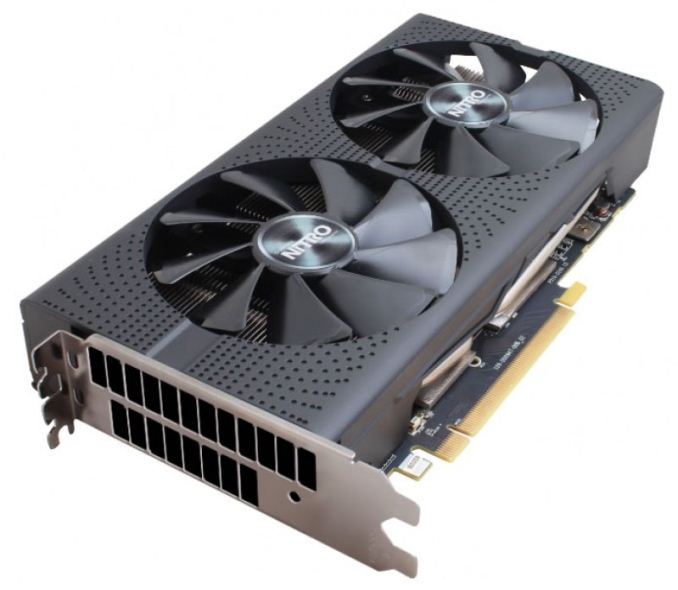ASUS & Sapphire Release Pascal & Polaris-based Cryptocurrency Mining Cards
by Nate Oh on June 27, 2017 8:30 AM EST
Even during the most bullish Bitcoin days, video card partners had shied away from creating specific SKUs for the purpose of cryptocurrency mining, and that has remained the case since – until now. With the Ethereum mining mania hitting new heights (ed: and arguably new lows), add-in board vendors ASUS and Sapphire have released mining-specific video cards, with variants based off of NVIDIA's GP106 GPU, and AMD's RX 470 & RX 560 video cards. Being built for high hash-rates rather than visual graphics horsepower, these cards are distinctively sparse in their display output offerings.
ASUS has outright labelled their cards as part of their new “MINING Series,” with product pages for MINING-P106-6G and MINING-RX470-4G advertising hash-rate production and cost efficiency features. Something to note is that ASUS has chosen to use the GPU codename of GP106, rather than the NVIDIA GTX 1060 branding. The GP106-based card has no display outputs, while the RX 470 card supports only a single DVI-D output despite humorously having HDMI and DisplayPort cut-outs on the PCIe bracket. Both cards are specified at reference clocks.
Meanwhile, Overclockers UK are listing 5 Sapphire MINING Edition SKUs, with 4 RX 470 variants differentiated by memory manufacturer and VRAM size: RX 470s with 4GB of non-Samsung (11256-35-10G) or Samsung memory (11256-36-10G), RX 470s with 8GB of non-Samsung (11256-37-10G) or Samsung memory (11256-38-10G), as well as an RX 560 Pulse MINING Edition card (11267-11-10G). None of the RX 470 variants offer any display outputs, while the RX 560 has a single DVI-D.
In the Overclockers UK product descriptions, cards with Samsung memory are specified for an additional 1 MH/s (mega-hashes per second) over the non-Samsung counterparts, highlighting the importance of memory bandwidth and quality in current Ethereum mining. In addition, the descriptions state a short 1 year warranty and, interestingly, CrossFire support for up to 2 GPUs. It remains to be seen whether these cards can be paired with standard video cards for the purpose of increased graphical performance.
Other SKU listings have surfaced in the wild: Sapphire RX 470 4GB with non-Samsung (11256-21-21G) and Samsung memory (11256-31-21G) on Newegg, and MSI P106-100 MINER 6G on NCIX. The Newegg Sapphire RX 470s, unlike the ones listed on Overclockers UK, both have single DVI outputs and 180 day limited warranties. However, the MSI mining card is completely bare of any details.
Looking back, Bitcoin, Litecoin, and Dogecoin – as well as many others – have all waxed and waned. Yet video card manufacturers remained the last holdouts in the PC component market in offering cryptocurrency-specific SKUs; since then, there have been tailored chassis’, PSUs, and motherboards both new and old. In the past, surging cryptomining demand has resulted in periodic supply issues, with consequences like $900 R9 290X’s. Now, ASUS and Sapphire seem intent on tackling the current Polaris and Pascal shortages from the most direct angle possible: cryptomining cards.
While drastic on some level, it’s representative of the difficult problem faced by both the GPU manufacturers (AMD and NVIDIA) and their video card partners. Mining-inflated demand restricts supply to such an extent that scarcity and artificially high prices infuriate standard consumers looking to purchase video cards. However, overproduction could easily lead into an intractably congested channel after the cryptomining craze has ceased, not to mention potential RMA/warranty headaches or unintentional flooding of the secondary market with used mining cards of variable health.
By offering cryptomining cards with limited warranties, restricted display outputs, and presumably lower manufacturing costs, vendors are hoping to capitalize on mining demand while satisfying standard consumers and avoiding undue damage to their brand or revenue. Given these aggressive and forthright efforts by ASUS and Sapphire, it would not be surprising if other add-in board vendors followed suit with a few mining-specific products of their own.
Source: Various (via PCPerspective)













30 Comments
View All Comments
DanNeely - Tuesday, June 27, 2017 - link
There're some countries with a statutory minimum warranty of several years for any non-consumable product.Hul8 - Tuesday, June 27, 2017 - link
The minimum warranty period is a consumer protection measure. One could make the argument that cryptomining doesn't fall into the category of consumer use.CiccioB - Tuesday, June 27, 2017 - link
If you sell them in a supermarket where consumer devices are sold, yes, they are part of consumer category.In my country you have 2 years warranty if you buy in a retailer as a normal consumer and 1 year if you buy for business (using an account that allows for not paying VAT).
1 year is guaranteed to anyone buying anywhere.
Death666Angel - Tuesday, June 27, 2017 - link
I'm only familiar with Germany (and the EU) way of doing warranty. Here we have a 2 year standard warranty (Gewährleistung) which applies to the retailer. For used / refurbished goods this can be reduced to 1 year. That warranty (Gewährleistung) is only good for about 6 months though, because of the burden of proof shifting after that.The warranty of the manufacturer (Garantie) is not dictated by law. It is a voluntary service the manufacturer offers to the consumer and is dependant on several things and can be declined if the terms of service have been violated. It sucks that there doesn't seem to be a good way to differentiate between these two very different forms of warranty in English.
Alexvrb - Tuesday, June 27, 2017 - link
Even if you can't make that argument, just don't sell in those countries. Miners will import the cards.Oh who am I kidding, most of these will go directly to Chinese mining farms. I wouldn't be surprised if some of the Chinese GPU vendors own a farming subsidiary or two.
vladx - Tuesday, June 27, 2017 - link
Simple, they don't. In my country these cards have already been listed and they have a 1 year warranty, the minimum required by law.BrokenCrayons - Tuesday, June 27, 2017 - link
It seems like these cards are just output port-reduced versions of existing cards with no special sauce used to improve performance. In the case of the GPUs with a display output, it might be an inexpensive way to get a gaming GPU if you only need one DVI and don't care about mfg. warranties.satai - Tuesday, June 27, 2017 - link
I like how the marketing dances around the fact, that this is completly useless for bitcoin and can be useful for some lesser-known-coins and some obscure-coins.But Mining P106 looks like a nice choice for basic deep learning.
Charlie22911 - Tuesday, June 27, 2017 - link
A good choice for folding rigs too I'd imagine!JoeyJoJo123 - Tuesday, June 27, 2017 - link
>that this is completly useless for bitcoinNewsflash, bud, using GPUs or CPUs to mine Bitcoin has been a completely inefficient usage of electricity since the first ASIC was specifically to mine Bitcoin. This has been true for _several_ years.
Due to Bitcoin's current difficulty curve and the fact that every other miner worth their salt is mining with much more efficient ASICs, you're hard pressed to make even meager gains over a several month period mining with GPUs, you're more likely losing money due to general wear you're placing on the GPU.
The video card demand on the market exists due to secondary cryptocurrencies like Etherium, which ASICs have not (and possibly may not be able to) been developed for. Bitcoin, being the most popular cryptocurrency, is commonly traded into as the "gold standard" for cryptocurrencies, and then exchanged for just about any other currency the user desires, or spent outright on Bitcoin enabled exchanges (which more than likely wouldn't accept Etherium outright, such as Newegg who accepts payment in Bitcoin.). Because Bitcoin is used in this manner, as secondary coins inflate in value, so too does the Bitcoin.